
So, I picked up a pair of these cheapo solar pump on fleabay for about 6 or 8 bucks a pop, to filter water for the fish in my old-lady-swallowed-a-fly lotus pot. They actually work pretty well, apart from one very occasionally getting stuck and needing a spin by hand to get going. But it’s winter, the fish have met Davy Jones (natural causes) and my “plastic twinwall and a big water tank will keep my greenhouse above freezing in a New England winter” hypothesis turned out to be way not true, so they’re just sitting around my basement for the interminable non-growing season. Winter boredom plus unused gadgets sitting around equals…
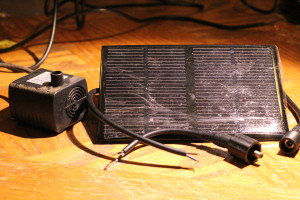

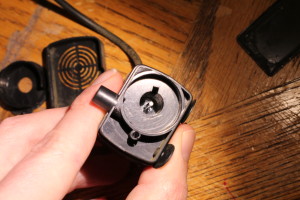
There’s not much to see on the pump end itself. A slotted cover blocks large particulates from getting into the works, followed by a plastic baffle and a centrifugal impeller, which flings the water at the outlet port. The impeller “shaft” is a magnet and doubles as the rotor for the electric motor, allowing the coils to be in the non-rotating housing (stator). Under bright sun, this arrangement can generate a head of a few inches or a decent amount of flow, not bad for a cheap pump running from a little solar panel.
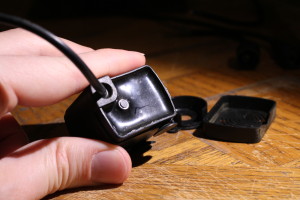
Lifting the cover on the other end reveals where the electronics must be, a cavity completely filled in with potting compound. I declined trying to get through this mess and look at the circuitry on the pump itself. Guessing wildly though, this should probably look very similar to the circuit that drives a DC computer fan, with a small Hall effect sensor detecting the passing of the magnetic poles on the rotor and flipflopping power to the stator coils as needed to push/pull it in the desired direction.
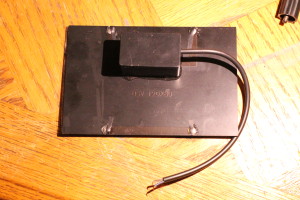
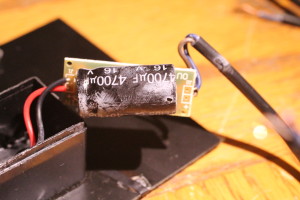
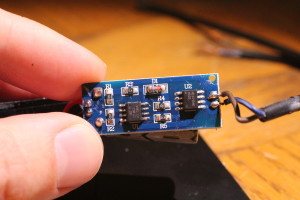
The interesting part is a random lump on the back of the solar panel. Pop it open and, sure enough, it contains some active circuitry. This consists of a large (4700uF) electrolytic capacitor and undervoltage lockout circuit. This circuit cuts power to the pump until the capacitor charges to several volts, giving it an initial high-current kickstart to overcome static friction. This works about like you’d expect, as a voltage comparator with a fairly large hysteresis band (on at 6V, off at 2V, for example). Interestingly though, there’s no discrete comparator in sight. Instead, there’s an ATTINY13 microcontroller. The ATTINY does have a builtin comparator though, and the chip’s only purpose in this circuit seems to be as a wrapper around this peripheral. It’s entirely possible that from Chinese sources, this chip was actually cheaper than a standalone comparator and voltage reference. Another likely possibility is it was competitive or cheaper than low-power comparators, and the use of a microcontroller allows better efficiency by sampling the voltage at a very low duty cycle. For reference, the ATTINY13 runs about 53 cents @ 4000pcs from a US distributor. That’s pretty cheap, but not quite as cheap as the cheapest discrete with internal voltage reference at <=100uA quiescent current, which currently comes in at ~36 cents @ 3000pcs. Noting the single-sided PCB, another possibility is that the ATTINY and other silicon were chosen for their pinouts, allowing for single-sided routing and thus cost savings on the PCB itself. Anyway, onto the circuit. R3 and D1 are an intriguing side-effect of using a general-purpose microcontroller as a comparator, as the absolute maximum Vcc permitted on this part is ~5.5V. D1 is a Zener diode, which along with the 47-ohm resistor, clamps the voltage seen by the uC to a safe level. This seems like it would leak a lot of current above 5.5V - and it does - but under normal operation, the pump motor should drag the voltage down below that when operating. R1 and R2 form the voltage divider for the comparator, which is no doubt using an on-chip voltage reference for its negative "pin". Pin 5 of the micro is the comparator output, which feeds the gate of an n-channel enhancement-mode MOSFET, U2, through R5, with a weak 100k pulldown (R4). With this circuit, the pump makes periodic startup attempts in weak sunlight until there's enough sun to sustain continuous operation, with no stalling if the power comes up very slowly (e.g. sunrise).
Leave a Reply